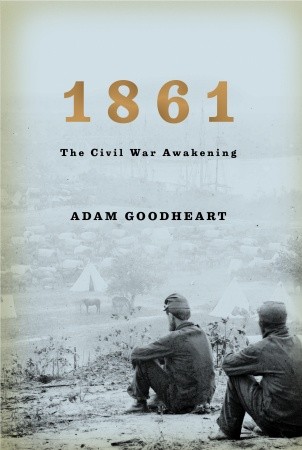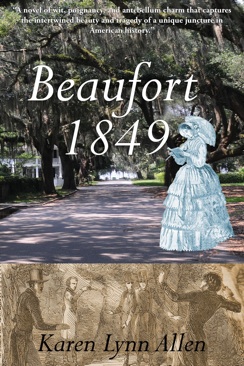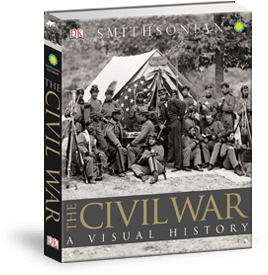Civil War Books Coming out from Jan – Jun
May be considered ‘new’ if the paperback verion is coming out, after the hardback was published earlier.
A Western Theater slant.
Some eBooks on Kindle too; as cheap as .99 cents.
January
Gone for a Sojer Boy: The revealing Letters and Diaries of Union Soldiers in the Civil War as they endure the Siege of Charleston S.C., the Virginia Campaigns … and Captivity in Andersonville Prison by Neal E. Wixson (Jan 1, 2011)
The Southern Home Front of the Civil War (Why We Fought: the Civil War) by Roberta Baxter (Jan 1, 2011)
The Great Schism: The Dividing of Virginia during the American Civil War by John A. Cowgill (Jan 4, 2011)
From Battlefields Rising: How The Civil War Transformed American Literature by Randall Fuller (Jan 3, 2011)
The Great Heart of the Republic: St. Louis and the Cultural Civil War by Adam Arenson (Jan 3, 2011)
“Out of the Mouth of Hell”: Civil War Prisons and Escapes by Frances Harding Casstevens (Jan 6, 2011)
History of the Seventh Indiana cavalry volunteers, and the expeditions, campaigns, raids, marches, and battles of the armies with which it was connected, … and other officers of the regiment; (1876) by Thomas Sydenham Cogley (Jan 7, 2011) – Kindle eBook
General Braxton Bragg, C.s.a. by Samuel J. Martin (Jan 12, 2011)
Sister States, Enemy States: The Civil War in Kentucky and Tennessee by Kent Dollar, Larry Whiteaker, and W. Calvin Dollar (Jan 11, 2011)
Personal recollections and experiences concerning the Battle of Stone River (1889) by Milo S Hascall (Jan 13, 2011) – Kindle eBook
The Regular brigade of the Fourteenth army corps, the Army of the Cumberland, in the battle of Stone River, or Murfreesboro’, Tennessee, from December … 3d, 1863, both dates inclusive (1883) by Frederick Phisterer (Jan 13, 2011) – Kindle eBook
“Co. Aytch” Maury Grays, First Tennessee Regiment or, A Side Show of the Big Show (Civil War) by Sam R. Watkins (Jan 16, 2011) – Kindle eBook
Grant and Sherman: Civil War Memoirs (Library of America) by Ulysses S. Grant, William Tecumseh Sherman, Mary D. McFeely, and William S. McFeely (Jan 20, 2011)
REMINISCENCES, INCIDENTS, BATTLES, MARCHES and CAMP LIFE OF THE OLD 4th MICHIGAN INFANTRY IN WAR OF REBELLION, 1861 TO 1864 by O. S. BARRETT (Jan 27, 2011) – Kindle eBook
February
The Notorious “Bull” Nelson: Murdered Civil War General by Donald A. Clark (Feb 1, 2011)
Savannah, Immortal City: An Epic lV Volume History: A City & People That Forged A Living Link Between America, Past and Present by Barry Sheehy, Vaughnette Goode-Walker, and Cindy Wallace (Feb 1, 2011)
Upcountry South Carolina Goes to War: Letters of the Anderson, Brockman, and Moore Families, 1853-1865 by Tom Moore Craig and Melissa A. Walker (Jan 31, 2011)
The Civil War: The First Year Told by Those Who Lived It (Library of America #212) by Brooks D. Simpson, Stephen W. Sears, and Aaron Sheehan-Dean (Feb 3, 2011)
The Civil War in Mississippi: Major Campaigns and Battles (Heritage of Mississippi) by Michael B. Ballard (Feb 1, 2011)
Life in Civil War America by Michael J. Varhola (Feb 27, 2011)
Columbia Civil War Landmarks (SC) by Tom Elmore (Feb 18, 2011)
NPR American Chronicles: The Civil War by NPR and Neal Conan (Feb 16, 2011) Audio.
The L&N Railroad in the Civil War: A Vital North-South Link and the Struggle to Control It by Dan Lee (Feb 15, 2011)
March
Generals South, Generals North: The Commanders of the Civil War Reconsidered by Alan Axelrod (Mar 1, 2011)
The Ideals Guide to American Civil War Places by Julie Shively (Mar 1, 2011)
Shifting Loyalties: The Union Occupation of Eastern North Carolina by Judkin Browning (Feb 10, 2011)
Lincoln Revisited: New Insights from the Lincoln Forum by Harold Holzer, Dawn Vogel, and John Y. Simon (Mar 14, 2011)
Marching Through Georgia: Story of Soldiers and Civilians During Sherman’s Campaign by Lee B. Kennett (Mar 8, 2011) – Kindle eBook
Battlefields of the Civil War: The Battles that Shaped America by Peter Cozzens (Mar 1, 2011)
Civil War America: 1850-1870 by Paul Johnson (Mar 15, 2011)
The Confederate Nation: 1861-1865 by Emory M. Thomas (Mar 15, 2011)
The Civil War: A Visual History by DK Publishing (Mar 21, 2011)
Lincoln on Race and Slavery by Henry Louis Gates and Donald Yacovone (Mar 21, 2011)
The Civil War Vault by Whitman Publishing (Mar 20, 2011)
America Aflame: How the Civil War Created a Nation by David R. Goldfield (Mar 15, 2011)
Daughters of the Union: Northern Women Fight the Civil War by Nina Silber (Mar 31, 2011)
Germans of Charleston, Richmond and New Orleans During the Civil War Period, 1850-1870 by Andrea Mehrlunder (Mar 31, 2011)
Great Civil War Heroes and Their Battles by Walton H. Rawls (Mar 29, 2011)
Slavery in the Upper Mississippi Valley, 1787-1865: A History of Human Bondage in Illinois, Iowa, Minnesota and Wisconsin by Christopher P. Lehman (Mar 29, 2011)
April
The Union War by Gary W. Gallagher (Apr 4, 2011)
The Won Cause: Black and White Comradeship in the Grand Army of the Republic (Civil War America) by Barbara A. Gannon (Mar 21, 2011)
Leaving Home in Dark Blue: Chronicling Ohio’s Civil War Experience through Memoirs and Literature by Curt Brown (Apr 1, 2011)
Breaking the Heartland: The Civil War in Georgia by John D. Fowler and David B. Parker (Apr 2011)
Starving the South: How the North Won the Civil War by Andrew F. Smith (Apr 12, 2011) – Kindle eBook
Fort Pillow, a Civil War Massacre, and Public Memory (Conflicting Worlds: New Dimensions of the American Civil War) by John Cimprich (Apr 8, 2011)
1861: The Civil War Awakening by Adam Goodheart (Apr 5, 2011) – Kindle eBook
This Great Struggle: America’s Civil War by Steven E. Woodworth (Apr 16, 2011)
Andersonvilles of the North: The Myths and Realities of Northern Treatment of Civil War Confederate Prisoners by James M. Gillispie (Apr 28, 2011)
The 11th Missouri Volunteer Infantry in the Civil War: A History and Roster by Dennis W. Belcher (Apr 26, 2011)
Tennessee in the Civil War: Selected Contemporary Accounts of Military and Other Events, Month by Month by James B., Jr. Jones (Apr 26, 2011)
The Civil War Box Set: With American Homer: Reflections on Shelby Foote and His Classic The Civil War: A Narrative by Shelby Foote and Jon Meacham (Apr 19, 2011)
Touring the Carolina’s Civil War Sites (Touring the Backroads) by Clint Johnson (May 1, 2011)
Confederate Naval Forces on Western Waters: The Defense of the Mississippi River and Its Tributaries by R. Thomas Campbell (Apr 30, 2011)
May
The Dogs of War: 1861 (Pivotal Moments in American History) by Emory M. Thomas (May 13, 2011)
The Seven-Day Scholar: The Civil War: Exploring History One Week at a Time by Dennis Gaffney and Peter Gaffney (May 10, 2011)
The CSS Arkansas: A Confederate Ironclad on the Western Waters by Myron J., Jr. Smith and George E., Jr. Wright (May 31, 2011)
Confederate Generals in the Western Theater, Vol. 3: Essays on America’s Civil War by Lawrence L. Hewitt and Arthur W. Bergeron Jr. (May 30, 2011)
Fugitive Slaves and the Underground Railroad in the Kentucky Borderland by J. Blaine Hudson (May 30, 2011)
The Enemy Within: Fears of Corruption in the Civil War North (A Nation Divided: Studies in the Civil War Era) by Michael Thomas Smith (May 26, 2011)
Colonels in Blue–Michigan, Ohio and West Virginia: A Civil War Biographical Dictionary by Roger D. Hunt (May 25, 2011)
Civil War 150 (Illustrated Living History Series) by Civil War Preservation Trust (May 17, 2011)
June
Mightier than the Sword: Uncle Tom’s Cabin and the Battle for America by David S. Reynolds (Jun 13, 2011)
Albert Taylor Bledsoe: Defender of the Old South and Architect of the Lost Cause (Southern Biography Series) by Terry A. Barnhart (Jun 10, 2011)
Confederate Invention: The Story of the Confederate States Patent Office and Its Inventors (Conflicting Worlds: New Dimensions of the American Civil War) by H. Jackson Knight (Jun 10, 2011)
Gray and the Blue, The: A Comic Strip History of the Civil War by Charles Hayes (Jun 1, 2011)










